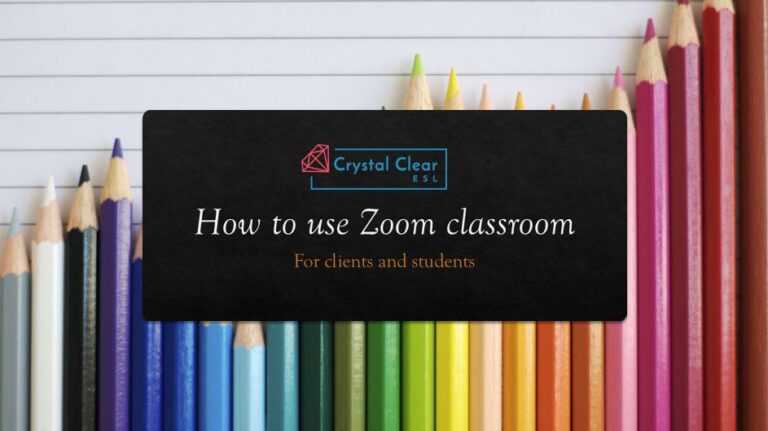Which Virtual Classroom Platform is best for ESL?
One of the best things about launching as a freelance ESL teacher is that minimal start-up capital is required. Sure, you can sign on with an expensive classroom software integration, such as Vedamo or LearnUpon, but do you need to in order to start bringing in revenue? Absolutely not. I’m a proponent of keeping start-up costs low to maximise the revenue of those first few all-important lessons.
Is there anyone anywhere that hasn’t grown accustomed to Zooming through the Pandemic? The remote working culture amped up in 2020 has resulted in a plethora of options for virtual classrooms, but from this growing list, which is right for your ESL classroom? While I’m all for boosting other small businesses, where platform is concerned, it’s tried and tested reliability FTW. Let’s compare some cost-efficient (insert: FREE!) veteran players and then I’ll give some overall recommendations.
If you’ve already subscribed to Microsoft 365, then it makes sense to use Teams for your online lessons. There are no limits to number of students or class duration and Teams is included in your subscription price. Teams will allow you to share your screen, share files and collaborate in real time with your students using the Microsoft suite; however, while there is a whiteboard annotation option, granting your students access to annotate your PPT is a sorely-lacking feature and a deal breaker, for me.
I LOVE it: limitless durations and integrations provided within the 365 subscription
I LEAVE it: limited annotation features, and none while screensharing lesson material
Pricing above free plan: $5.00/month
Google Meets offers some impressive free capabilities, including its integration with education giant, Google Classroom. It is one of few platforms to allow group meetings of up to 60 minutes under its free plan, which makes it the best choice for longer group classes. With top security and scheduling features as well as some exciting paid add-ons like polls and attendance reports, Google Meets seems like a great choice. Unfortunately, the free plan does not offer meeting recording as standard: a major consideration for safe-guarding in your online classroom. What’s more, if your client niche is Chinese, be aware that Google services are banned in China.
I LOVE it: limitless durations and participants included on the free plan
I LEAVE it: lack of meeting recordings on the free plan, and banned in China
Pricing above free plan: $8.00/month
Skype is the slightly senile, elderly aunt of the modern virtual classroom platform. It got its start as a web-based telephone service and was a forerunner in video conferencing; however, its development has lagged in recent years. The biggest complaint users continue to report is instability of call quality, but clunky interactive features are also a deterrent. Interestingly, like Teams, Skype is owned by Microsoft, and it looks like they are gradually rolling their Skype conferencing services over to Teams; in fact, they don’t sell subscriptions to Skype for Business anymore.
I LOVE it: free conferencing for groups >20 with no download required
I LEAVE it: glitchy streams, limited annotation factors = Teams
Pricing above free plan: $5.00/month – MS365 Teams
Zoom has been the real MVP during the Pandemic. It is not the most intuitive platform, but with some practice it gets the job done. Zoom’s free plan is perfect for shorter classes of up to 40 minutes and 100 students because it offers full screensharing (with multiple sharing options), annotation, scheduling and recording functions. Upgrades include breakout rooms, ideal for group classes. Zoom has responded to criticism about security by mandating password protection and adding waiting rooms. Finally, Zoom is available worldwide (called ‘Zhumu’ in China!) and does not require your participants to download an app.
I LOVE it: numerous screensharing capabilities; worldwide accessibility
I LEAVE it: short meeting durations on the free plan; upgrade is expensive in comparison to market standards
Pricing above free plan: $14.99/month
For me, the improved interaction allowed to my students through screenshare annotations are paramount in my platform decision. It is super important to access the varied learning styles of my students by getting them involved. In fact, the Crystal Clear ESL lesson library depends on interactive annotation! This factor is even more crucial than the recording option, because I know there are third party apps available to record my meetings. All things considered, I use Zoom with confidence, knowing new students can access it and it offers the features I need. As my business grows, and I want to offer longer or larger classes, I know Zoom offers the backup upgrade, but for now it’s a cheap and easy addition to my teaching repertoire.







